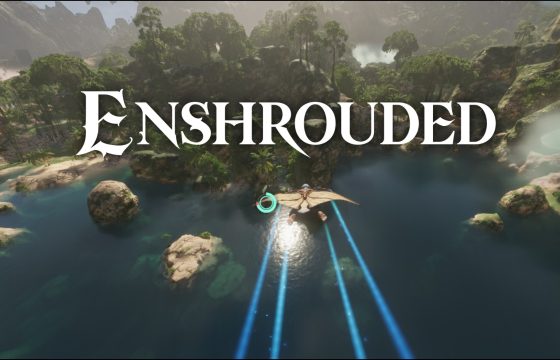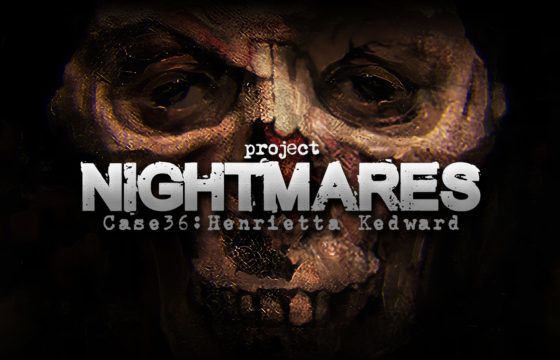Well, life as a delivery courier isn’t all that bad, is it, Mika?

We’ll be the first to admit it—never in our wildest imaginings did we foresee that stepping into the role of a delivery witch would become one of our recent favorite pastimes. Yet, here we are, delighting in the joy and relaxation of gliding across the island beneath Mount Gaun on our trusty flying broom, engaging with eccentric characters, and delivering their wonderfully odd parcels.
As you might have guessed from the introduction, we recently had the pleasure of previewing Mika and The Witch’s Mountain, the enchanting delivery witch fantasy adventure from Chibig and Nukefist. Released on August 21 for PC via Steam (in early access) and Nintendo Switch, this game has already cast its spell on us.
Having soared through the skies of this enchanting island, explored every hidden nook of its magical realm, and spent time with the spirited Mika, we’re excited to share our thoughts with you. Join us as we unveil whether these first hours with Chibig and Nukefist’s latest creation have truly won us over.
I’ll return to the top and show you what I’m truly made of
Wait just a moment—before you continue, we need to make an important point: if you haven’t already, we highly recommend checking out our main coverage of Mika and The Witch’s Mountain. It’s essential reading to ensure you’re fully up to speed on the game’s development story, as well as key insights about its creators.
Now, where were we? Ah yes, we were about to delve into the short yet utterly charming story of Mika and The Witch’s Mountain. While the narrative is brief—you’ll likely finish it in just a few hours—it’s perfectly in sync with the game’s core concept, themes, and the message it strives to communicate. The overall vibe reminded us of a carefree, peaceful vacation—restful and rejuvenating—though we must admit, it feels a bit too brief.

The tale begins with a beautifully crafted cutscene, introducing us to our impulsive and sharp-tongued protagonist, Mika. From there, we’re whisked away to the game’s first major area: the breathtaking Mount Gaun, home to Mika’s new mentor, Mistress Olagari. Arriving on broomsticks, side by side with her mother, Mika steps into this enchanting magical haven, ready to embrace her destiny, pursue her calling, and become, from a mere apprentice, a skilled and respected witch.
However, upon meeting Mistress Olagari, Mika quickly realizes that reality diverges sharply from her expectations. The mount proves to be merely a waypoint—at least for now—for our young heroine. From the outset, her mentor is cold and distant, harboring doubts about Mika’s abilities, as if unwilling to accept her as an apprentice. Yet, after Mika presents a meticulously written letter from her mother, complete with all the required apprentice supplies, the Mistress Witch reluctantly agrees to take her under her wing and guide her on the path to becoming a fully-fledged and accomplished witch.
And so Mika’s misadventures begin: confident that her new apprentice will fail at the first hurdle, Mistress Olagari sets an almost impossible challenge. Mika is tasked with making her way back to the summit of Mount Gaun, riding her broomstick—entirely on her own. What might seem like a simple task for a witch becomes far more daunting when, to “spice things up,” Mistress Olagari casts a spell that sends Mika tumbling from the mountain’s peak to the island far below—a dizzying drop of considerable height.

Furious—no, utterly enraged—by her mentor’s treatment, Mika is resolute in her quest to scale Mount Gaun again and prove Mistress Olagari wrong. But there’s a hitch: during her harrowing descent, Mika’s broom broke, taking with it her hopes of returning to the summit, redeeming herself in Olagari’s eyes, and achieving her witching dreams. Everything seemed lost.
That is, until she stumbles upon a small, picturesque village nestled by the ocean’s edge, just below where she landed. It’s the perfect place for Mika to regroup and find someone capable of repairing her broken broom. As luck would have it, on reaching the village outskirts, she meets Allegra, a talented artisan who agrees to repair her broom. Yet, there’s an additional complication: while the broom is now functional, it lacks the power to carry Mika back to the mountain.
However, Allegra, having developed a fondness for Mika, steps in once more. She offers to craft a brand-new broom that will enable Mika to finally reach Mount Gaun—for a reasonable fee. The only problem? Mika has no money to afford it. To secure the funds for her new broom, she must find work. Fortune smiles upon her when Allegra suggests an opportunity: Mika can work as a delivery courier for a local service that’s short-staffed, using her newly repaired broom.
Thus begins Mika’s new chapter as an apprentice witch. To pursue her dreams, she must roll up her sleeves and embark on the most unexpected of jobs: being a courier. Despite its initial hurdles, this role brings Mika unexpected satisfaction and marks the beginning of her journey toward becoming a witch, albeit in ways she hadn’t anticipated.
Delivering packages is enjoyable, though it can get a bit repetitive…
In Mika and the Witch’s Mountain, the gameplay embraces a non-violent approach. So, if you and your mischievous mind attempt to send the young witch apprentice tumbling from great heights, the only result you’ll get is purely comedic—Mika splatting to the ground like a pancake. We have to admit, the fall animation is so amusing that we found ourselves making her fall on purpose just to enjoy the spectacle.
But here’s the thing—no matter how hard you try, Mika is invincible. Any attempt to harm her is futile. Much like our experience with Creatures of Ava, the creators of Mika and the Witch’s Mountain have crafted a relaxing experience from the very beginning. It’s designed to help players unwind, making it accessible to all ages, free from anything that could distress or alienate younger audiences.
Now, the critical question remains: does this design choice pay off? Absolutely. Despite the repetitive nature of its core mechanics, the gameplay remains consistently fun and refreshingly non-tiring. This is largely due to the well-balanced mix of elements, which made our time on Mount Gaun feel as peaceful as it was engaging.


The gameplay can be divided into two main aspects. The first revolves around completing the main quest: fulfilling your duties as a courier by soaring through the skies, delivering packages with precision and speed to satisfy your employer’s high standards. The second invites you to explore the game world more thoroughly, completing side quests and collecting delightful outfits to enhance Mika’s charm.
As mentioned, Mika cannot die and has no health bar. But don’t let that fool you into thinking the gameplay is without its challenges. To succeed and gather the coins needed for that coveted new flying broom, Mika must make her deliveries flawlessly: on time, intact, and handled with care. Your earnings depend directly on your performance—the fewer mistakes, the greater your reward.
Each delivery assigns the package a “life bar” represented by hearts, along with specific conditions such as “keep the package dry,” “avoid damage,” or “deliver within a time limit.” If you’re still honing your broom-riding skills and mishaps occur—like damaging or soaking the package—you’ll incur penalties, losing hearts from the package’s life bar.
Recipients will rate your service with three colored stamps: a green stamp means a flawless delivery, earning you a coin; a yellow stamp reflects a mediocre effort, offering no reward; and a red stamp… well, not only will you miss out on any coins, but you’ll also receive a sharp reprimand from your boss.
But fear not! If a delivery doesn’t go as planned or you deem the package beyond saving, you can always return to your workplace, collect a fresh one, and attempt the delivery again.
It’s time to take flight
Before we delve into the second core element of Mika and The Witch’s Mountain, let us take a moment to explore one of the game’s cornerstone mechanics that deserves a deeper look: the flight system and its pivotal role in shaping the experience.

Despite its flaws—such as the repetitive nature of the gameplay and a lack of depth in certain features—Mika and The Witch’s Mountain shines in its use of Mika’s flying broomstick. The game excels with its exceptionally smooth and engaging flight controls. It beautifully incorporates elements like vertical air currents that lift Mika into the sky and horizontal currents that grant high-speed sprints. Wind Cannons, activated by blue orbs, further elevate the experience by propelling Mika at breakneck speeds, allowing her to cover large swathes of the game world with a single bound.
However, the currents aren’t always your allies; they can sometimes become your greatest obstacle, sending you crashing into objects and damaging your cargo. This adds an extra layer of challenge and highlights the developers’ thoughtful approach to world-building and level design.
Gaining advanced flying abilities is a gradual process. At the beginning of the adventure, your broomstick—patched up by Allegra and barely functional—won’t grant you access to these features. As you progress, you’ll need to upgrade to new brooms to fully unlock your witchly potential. Additionally, as you enhance your broom, it will also increase the capacity for carrying packages, reflecting the game’s gradual and rewarding progression system.
Explore, Collect, and Customize
If you believe that flying on your broomstick and delivering packages is all there is to do, think again. Serving as a courier is just a small part of what this vibrant, lush island has in store for you—a world teeming with hidden secrets waiting to be uncovered and eccentric characters eager to have their whims fulfilled.


While the game world isn’t particularly vast, and completing all available activities takes just a few hours, the developers have carefully crafted every inch, making the environment feel rich and alive without becoming tedious. This thoughtful design is complemented by well-written side quests, which—despite a touch of repetitiveness—keep you engaged through the colorful personalities of the island’s inhabitants and Mika’s sharp, witty exchanges. The dialogue, while simple, manages to charm and entertain, leaving a lasting impression.
One of the game’s true highlights is its art design, which, along with the quality of the animations, elevates the entire experience. The over-the-top facial expressions of NPCs—whether they’re fuming with anger, wide-eyed with surprise, or beaming with joy—coupled with the beautifully illustrated 2D cinematics, contribute to the game’s enchanting and welcoming atmosphere.
However, there is room for improvement in the map design. Although it is visually appealing and functional, adding more descriptive elements could improve navigation. On the other hand, the customization options for Mika and the intuitive inventory system are beautifully executed, balancing style and utility. The delivery card, in particular, stands out, offering a clear and detailed breakdown of each order, making it easy to stay organized and fully engaged in the tasks at hand.


And if you can’t resist the thrill of tracking down lost items and reuniting them with their rightful owners, you’re in luck. Scattered across the map, in addition to two types of collectibles (which we’ll discuss shortly), are special items—extra deliveries that, should you choose, can be returned to their owners. To make your search easier, these items—like all other discoverable objects—emit a distinctive glow. The real challenge lies in identifying the owner and ensuring the item finds its way back. As these aren’t official tasks from your employer, the responsibility for completing the delivery and safeguarding the item is entirely yours.
Now, let’s turn to the coveted collectibles that will delight every completionist. In Mika and the Witch’s Mountain, there are two categories of collectibles—one relatively simple to locate, and the other, well, more elusive. The first are Napopo statues, small figurines tucked away in the game’s most secretive nooks and crannies. There are 100 in total, some hidden beneath the shadow of towering trees, others perched atop unlikely peaks. But for those with the patience and perseverance to find them all, the reward is worth the effort: optional customizations, including new skins and charms, which can be purchased at the Offering Fountain—a landmark that shares the same symbol and design as the statues, making it hard to miss.


The second type of collectible is the tarot cards, which are more challenging to acquire. You’ll need a significantly upgraded and powerful broom to reach them. Once equipped, you’ll need to smash into the Simiente jars, breaking them from lofty heights. Hidden within these jars are the sought-after tarot cards, waiting to be discovered.
When will our review of Mika and the Witch’s Mountain be released?
At this stage, you may be wondering: why a preview and not a full review? The reason is simple—Mika and the Witch’s Mountain is still in early access, and its final version is yet to be completed. Several features and functionalities are still in development, with an estimated six months needed for full integration. It’s not our practice to review a game that isn’t complete, so we believe it’s only fair to allow the developers the time they need to perfect the content before delivering a definitive verdict. In the meantime, here are some of our early impressions from our time on Mount Gaun.
The work done by Chibig and Nukefist is certainly commendable and showcases the developers’ commitment and passion. However, there is still room for refinement. The game has a solid foundation, with its art direction and well-thought-out gameplay design, but some areas would benefit from improvement. For example, the soundtrack doesn’t always sync well with the game’s flow and occasionally cuts out, breaking the immersion. The gameplay itself, while enjoyable, could use more variety and dynamism. The story, although light and engaging, could be enhanced with seasonal updates, new areas, or additional quests that intertwine with the main plot. The team has already hinted at plans to introduce charming mini-games, which we look forward to.
We’ll release our full review once the game leaves early access and the new content is fully integrated. This will give us the opportunity to assess how the final mechanics come together and provide a thorough evaluation of the complete experience.
Mika and the Witch’s Mountain is now available on Nintendo Switch and PC via Steam. Indie Games Devel was provided a PC code for this preview.
For the latest updates, be sure to follow the game’s official page on X and stay tuned for more news from Chibig and Nukefist.
That’s all for today. Until next time!









